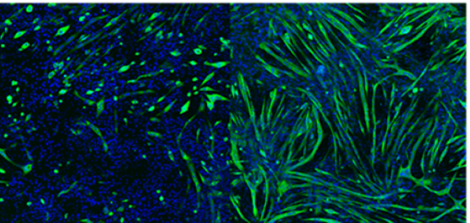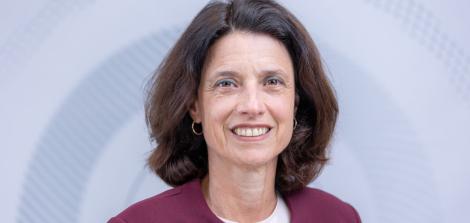The Visual System: When the Eyes Wander Outside the Clinic
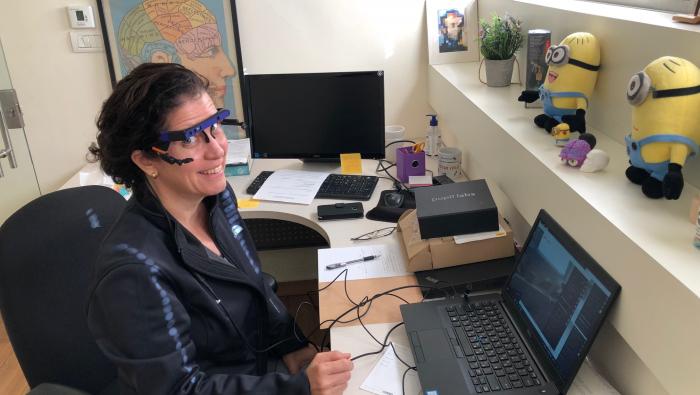
Prof. Sharon Gilaie-Dotan, from the Dangoor Center for Personalized Medicine at Bar-Ilan University, studies visual function in natural settings.
When we sit down for an eye exam at the optometrist's clinic and focus on the screen in front of us, we usually ignore elements like motion and depth- factors we constantly encounter in the real world. To better understand how our visual functions as measured in the clinic differ from how we actually see in everyday life- and how these differences might impact potential solutions for vision impairments- we spoke with Prof. Sharon Gilaie-Dotan.
In Prof. Gilaie-Dotan’s lab, which is part of the Mina and Everard Goodman Faculty of Life Sciences, the Gonda Brain Research Center, and the Dangoor Center for Personalized Medicine at Bar-Ilan University, researchers study the many factors that influence how the brain’s visual system functions beyond the sterile setting of the clinical examination room.
“A key concept in my research is ‘natural vision,’” says Gilaie-Dotan. “Many vision tests in clinics and labs are done while we’re seated, feeling safe and stable, with all our attention focused on a visual task. But these conditions don’t reflect how we actually see in everyday life. In reality, our visual behavior is very different- we see while walking or when our brain is occupied with other things, and we focus on objects at various depths, both in the center of our visual field and in the periphery. In fact, vision is what enables us to be dynamic in our environment and move efficiently without bumping into things.”
A study on visual memory in older adults revealed a surprising finding: visual memory in older adults is no worse than that of younger individuals.
Does that mean that vision tests in the clinic are limited?
“They only examine part of our visual picture. You can get a sense of what’s being tested in standard eye exams by stretching your arm forward and holding your palm in front of your eyes. Now imagine trying to walk or do something else while seeing only the area covered by your palm, with the rest of your visual field blocked. Peripheral vision is incredibly important to us- we heavily rely on it, and yet it’s underappreciated, and we still don’t know much about it.”
How does your research address this issue?
“In our lab, we try to move beyond the comfort zone of traditional vision tests by incorporating additional factors like walking, stimulus size, and the location of relevant stimuli to see how they affect visual function. For example, we had participants freely look at visual stimuli without giving them any instructions on what to do with what they were seeing, which actually mirrors how we encounter things in real life. Only afterward did we test how well they remembered what they had seen.”
That might vary from image to image and from one person to another.
“Of course. Say I see a picture of broccoli- I happen to love broccoli, and let’s say I’m also hungry- while the person next to me feels totally indifferent about it. We’re both getting the exact same image on our retina, but we’ll process the information differently. I might take great interest in the picture, while he’s thinking about something else entirely. In real life, it’s usually us, not someone else, who directs our gaze, and that happens even when we’re not fully focused. On top of that, there are many individual differences in how we see.”
There are cognitive differences between people too, right?
“That’s true, although sometimes we discover that the differences are in places we didn’t expect, or that they are smaller than we thought. For example, I have a student who’s researching visual memory in older adults, and she found a surprising result: visual memory for images in older adults is not worse than that of younger people. Older adults do often report a decline in memory and vision, like reduced sensitivity to light contrast, but when it comes to visual memory, the findings told a different story.”
How do you explain that?
“A significant part of memory ability is actually tied to language. So when older people say their memory is declining, they might be referring to verbal memory, like remembering names or facts, rather than visual memory. Also, even if certain aspects of vision decline with age, older adults have a wealth of visual wisdom, knowledge, and experience built up over years of seeing the world. That might help them when it comes to remembering images. It’s also possible that some of the participants in the study were ‘super-agers’- people whose cognitive and memory abilities remain exceptionally strong. In any case, visual memory is a great example of why studying visual function matters. While classic studies from the 1970s showed that many people have phenomenal visual memory- able to recall hundreds or even thousands of images- when you repeat those tests under less-than-ideal conditions that mimic natural vision, performance drops significantly.”
Does that mean the data from standard experiments is worthless?
“The data from standard experiments is valuable and important, but in addition to that, we also need to study vision in more natural settings to understand how our visual system changes when we step outside our comfort zone and to better characterize everyday visual functioning. The more we investigate vision under diverse conditions, the more we learn about individual visual differences. For example, you can think of the visual system as a kind of ‘counterpart’ to the motor system; vision plays a critical role in allowing us to move safely through space. Our research shows that vision influences motor function, and that this influence is also tied to how much each person relies on their peripheral vision. We conducted these studies on the interplay between walking and vision in collaboration with Prof. Meir Plotnik from Sheba Medical Center and Dr. Amit Benady.”
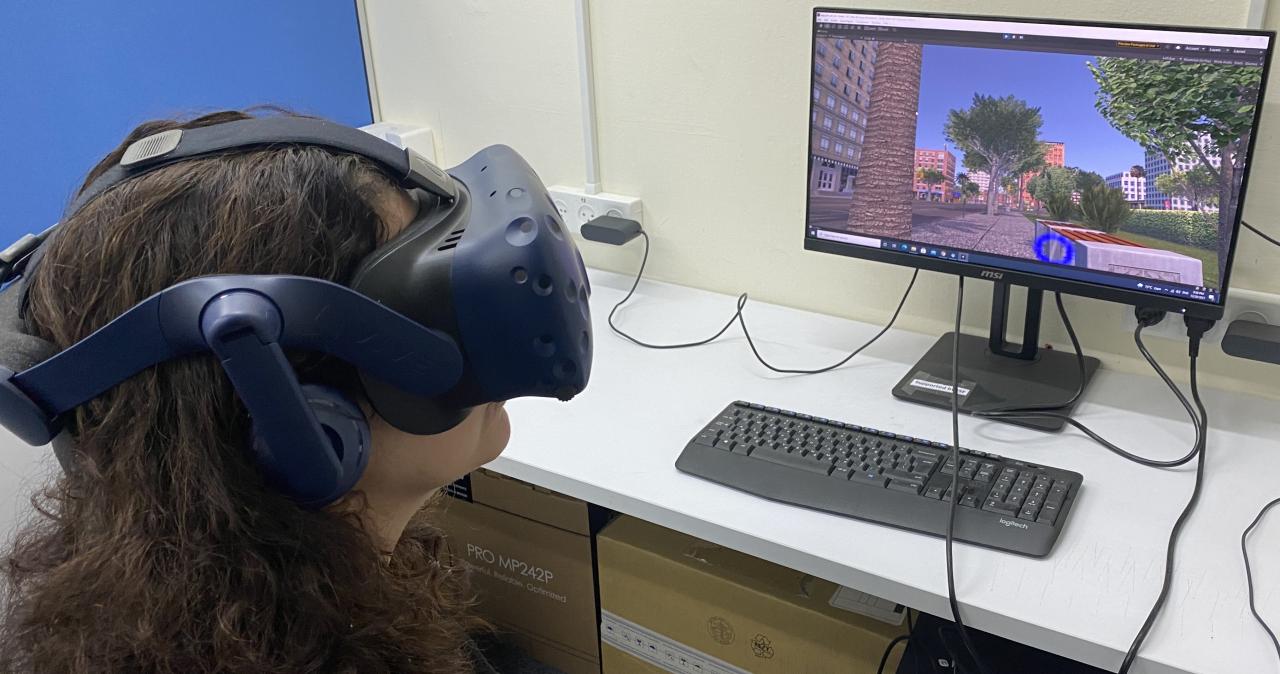 Gilaie-Dotan wearing a VR headset in her lab. Photo credit: Shaima Masarwa
Gilaie-Dotan wearing a VR headset in her lab. Photo credit: Shaima Masarwa
You see what’s right under your nose
“When there’s a mismatch between what we see and what our body senses- like when we see an incline but are actually walking on a flat surface- the body’s first instinct is to trust the eyes and adjust according to what the visual system says.”
How does vision affect walking?
“We found that when there’s a mismatch between what we see and what our body senses- like seeing an incline while actually walking on a flat surface- the body initially trusts the visual input and adjusts itself according to what the visual system is telling it, even if the physical sensation says otherwise. It takes time for us to recalibrate and realize that our vision was wrong or misleading and that we are, in fact, on level ground. We also discovered that there’s a significant difference between individuals in how sensitive they are to visual information in the periphery of their visual field. This difference predicts how strongly vision influences their walking. In other words, individual differences in peripheral vision may help explain why some people struggle more than others to move around safely.”
In another experiment, you showed that vision is also influenced by emotion.
“One of my students, Dr. Vasilisa Akselevich, who has a deep interest in emotions and facial expressions, led a study on this topic. She examined how we perceive facial expressions when they appear at the center of our visual field versus in the periphery. The results showed that our ability to determine whether a facial expression is positive or negative declines the farther it is from the center- but it declines less when the emotion is positive. When negative emotions were shown in the periphery, our ability to recognize them dropped significantly. We also found individual differences in how well people can identify positive expressions in their peripheral vision, and that this ability is distinct from the ability to recognize negative expressions.”
Isn’t that counterintuitive—or even contrary to evolution?
“There are theories suggesting that the ability to detect negative emotions is crucial for survival- after all, missing signs of threat or danger in the periphery could put us at risk. But there are also other theories that argue our survival as a group depends on recognizing positive emotions, which is why that ability may have become highly developed. It’s also worth noting that positive emotions tend to stand out more- a smile and visible teeth are more noticeable than negative expressions. Even if we can’t say for sure why this happens, the result was consistent and statistically significant across two separate studies.”
So you're essentially finding that our eyes aren't an objective camera, and that our vision is biased?
“We conducted a study that looked at how we perceive visual information from different areas of our peripheral vision. We found that information coming from the lower part of the visual field is processed very differently than information above the fixation point. In a series of experiments, the consistent result was that people perceive objects below the center of gaze as much closer than identical objects at the same distance above it, which are judged to be farther away. This may be because our heads tend to tilt downward, and our gaze naturally drops more than it rises while walking, or it could be due to gravity, or the fact that throughout our lives, we interact far more with the lower part of our visual field. It’s a clear example of how our visual system is shaped by experience.”
Personalized medicine aims to tailor medical treatments to each patient’s individual needs. How does that connect to your research?
“We don’t work directly with medications or vision aids, but rather focus on understanding and exploring visual function. Our research reveals significant individual differences in natural visual performance, and when someone experiences a visual difficulty- such as trouble recognizing faces, or reduced contrast sensitivity- it’s important to understand how their vision functions across multiple dimensions. Some people’s vision is more influenced by peripheral visual processing, and we’ve seen this affect their walking. Others may struggle with eye movements, or have color perception or contrast sensitivity that shifts under certain conditions or distances.”
What kinds of cases come to you?
“We see cases of individuals with unique visual impairments that the healthcare system has not been able to address, and we try to understand their visual reality. For example, we had a patient who, after a brain injury, completely lost her ability to perceive depth. She had to touch the floor to figure out whether she was facing stairs, a slope, or flat ground, which made it very difficult for her to move around. Simply identifying and characterizing her difficulty helped us find suitable solutions. One of my students, Dr. Avi Portnoy, works on visual training and runs the Visual Training Clinic at our School of Optometry and Vision Science at Bar-Ilan. He helps people improve their visual functioning. In some of our studies, we found that difficulties with eye movements in children are linked to challenges in visual perception or difficulties in learning to read.”
“We see cases of individuals with unique visual impairments that the healthcare system has not been able to address. For example, a patient who, following a brain injury, lost the ability to perceive depth. Understanding and characterizing her difficulty helped us find solutions that were right for her.”
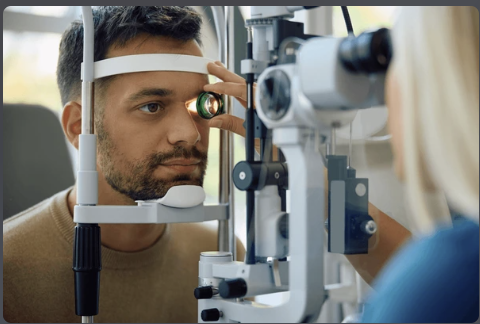 Standard eye exam in a clinic, performed while seated
Standard eye exam in a clinic, performed while seated
What was the mobile testing unit doing on October 7?
Prof. Sharon Gilaie-Dotan holds a bachelor's degree in mathematics and a master's degree in computer science. During her master’s studies at the Weizmann Institute, she was introduced to the field of brain research and went on to complete a PhD there in neurobiology. She later conducted postdoctoral research at University College London, and in 2016, she joined the faculty at Bar-Ilan University.
What led you to shift from mathematics to vision science?
“While studying mathematics and computer science, I took a neuroscience course that introduced me to the human brain, a subject that immediately fascinated me. That led me to explore the brain’s visual system, which struck me as an endless puzzle. Although my master’s degree was in mathematics, my research focused on the brain’s visual system, and from that point on, I was fully immersed in the field of vision.”
What sets Bar-Ilan University apart in the field of vision science?
“The School of Optometry and Vision Science at Bar-Ilan University is the only one in Israel that offers a full academic track in vision science with a bachelor's degree in the field, as well as research-based master's and PhD programs. On top of that, it provides outstanding training for optometrists. We have a wide range of equipment and expertise covering many aspects of vision, along with advanced clinics for vision testing and support for people with visual difficulties. These clinics, which are open to the public, offer free eye exams. It’s a win-win: the public receives thorough vision checks under the supervision of expert optometrists, and our students gain hands-on experience beyond practicing only on one another.”
“We also have a mobile testing unit that regularly travels to underserved areas, like nursing homes, orphanages, and schools in the periphery- places where awareness and resources for eye care are often lacking. Right after October 7, the unit went to hotels housing evacuees, many of whom had lost or broken their glasses, and helped fit them with new ones. It’s part of our commitment to serving the community, which we see as an essential part of our mission.”
Looking ahead, how do you see the field evolving?
“The potential is enormous, because technologies for correcting and restoring vision have advanced dramatically. That said, there are still many people with a wide range of visual impairments who don’t have adequate solutions, and there’s a long way to go in providing each person with the best possible vision. Even when solutions like smart glasses are developed, they have to be personalized for the individual. We need to remember that vision is a collection of abilities- not just one- and that each visual system with impairments is unique. Much of what we currently know about vision comes from studies conducted while sitting, but our natural vision usually doesn’t happen in a static, protected position. The more we understand the full spectrum of visual function- including how it helps us move and interact dynamically with the world- the better we’ll be able to create personalized solutions that help people overcome their specific visual challenges.”
Main photo: Prof. Sharon Gilaie-Dotan in the lab
Photo credit: Vasilisa Akselevich
Last Updated Date : 06/07/2025






